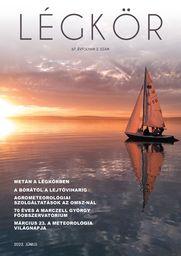LÉGKÖR - Quarterly Newsletter
Vol. 67, No. 2 * Pages 70–120 * June 2022
 |
|
 download [pdf: 30460 KB]
download [pdf: 30460 KB]
From Adriatic bora to Bakony-Balaton downslope wind
Kurcsics Máté, Horváth Ákos
DOI:10.56474/legkor.2022.2.2 (pp. 77–89)
Kurcsics Máté, Horváth Ákos
DOI:10.56474/legkor.2022.2.2 (pp. 77–89)
Agrometeorological services on the OMSZ website
Kovács Attila Viktor
DOI:10.56474/legkor.2022.2.3 (pp. 90–98)
Kovács Attila Viktor
DOI:10.56474/legkor.2022.2.3 (pp. 90–98)
LÉGKÖR - Quarterly Newsletter
A folyóirat nyomtatott változata megrendelhető a legkor@met.hu címen.
Kapcsolat: legkor@met.hu
SZERKESZTŐBIZOTTSÁG
SZERZŐI ÚTMUTATÓ
Kapcsolat: legkor@met.hu
SZERKESZTŐBIZOTTSÁG
SZERZŐI ÚTMUTATÓ









